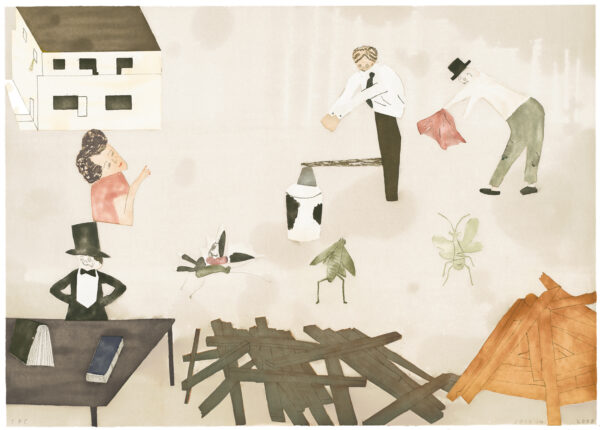
Color spit bite and sugar lift aquatints with aquatint and soft ground etching.
26 x 48½"; 26 x 48½". 50.
Crown Point Press and Emily York.
$6,500 Unavailable

Color spit bite and sugar lift aquatints with soft ground etching.
22½ x 31½"; 22½ x 31½". 50.
Crown Point Press and Emily York.
$5,500 InquireInquire

Color spit bite and sugar lift aquatints with aquatint and soft ground etching.
19¼ x 27½"; 19¼ x 27½". 50.
Crown Point Press and Emily York.
$3,500 InquireInquire

Portfolio of six color aquatints with etching.
22 x 15½" and 15½ x 22"; 28½ x 21½" and 21½ x 28½". 30.
Crown Point Press and Emily York.
$20,000 fair market value Proof AvailableProof Available

Color spit bite and sugar lift aquatints with aquatint and soft ground etching.
15½ x 22"; 21½ x 28½". 30.
Crown Point Press and Emily York.
$3,500 fair market value Unavailable

Color spit bite and sugar lift aquatints with aquatint and soft ground etching.
22 x 15 1/2"; 28 1/2 x 21 1/2". 30.
Crown Point Press and Emily York.
$3,500 fair market value Unavailable

Color spit bite and sugar lift aquatints with aquatint and soft ground etching.
15½ x 22"; 21½ x 28½". 30.
Crown Point Press and Emily York.
$3,500 fair market value Unavailable

Color spit bite and sugar lift aquatints with aquatint and soft ground etching.
22 x 15½"; 28½ x 21½". 30.
Crown Point Press and Emily York.
$3,500 fair market value Unavailable

Color spit bite and sugar lift aquatints with aquatint and soft ground etching.
15½ x 22"; 21½ x 28½". 30.
Crown Point Press and Emily York.
$3,500 fair market value Unavailable

Color spit bite and sugar lift aquatints with aquatint and soft ground etching.
22 x 15½"; 28½ x 21½". 30.
Crown Point Press and Emily York.
$3,500 fair market value Unavailable

